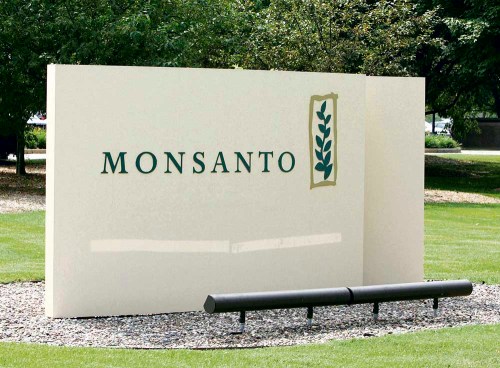The Monsanto-Bayer merger and ‘Big Ag’
Published 9:08 am Friday, September 23, 2016

- The entrance to the Monsanto Co. headquarters in St. Louis is seen in a file photo. Twenty-two plants of a variety of genetically modified wheat developed by the company have been found in a fallow field in Washington state.
Monsanto has agreed to a $57 billion cash offer from Bayer, the German pharmaceutical and chemical company. If shareholders and regulators approve, the merger will form a giant international seed and farm services company.
We expect a thorough vetting here and in Europe. The sheer enormity of the deal requires a thoughtful review for possible antitrust issues.
Beyond the legitimate legal concerns raised by the deal, supporters and critics have attached every conceivable meme to the potential consequences of the merger. Here are a few:
• “Big Ag” is getting bigger. Obviously. The Bayer/Monsanto deal comes as state-owned ChemChina is taking over Syngenta and Dow and DuPont are merging.
It’s a legitimate concern. These are big companies with big market shares. As these companies consolidate and get bigger, farms in the developed world that are their customers are consolidating and getting bigger.
While bigger isn’t necessarily better, it is not necessarily worse. It’s the natural product of evolution. But so is the rise of small companies with bigger, better ideas.
• Bayer, a big company with lots of pull in Europe, could make GMO crops more acceptable to EU countries. Fearful critics and hopeful supporters have both floated this possibility.
It seems unlikely. Bayer has its supporters in ag circles, but large companies aren’t always popular in Europe.
• Because Bayer is a big European company operating in countries that reject GMOs, it will move away from genetic engineering. This is a fear expressed by American farmers who have adopted the technology.
That seems unlikely, given Bayer is paying $57 billion for a company that is the leader in ag biotechnology. It’s not spending that money to kill GMO agriculture. Without biotechnology and the patents from adopted varieties, Monsanto’s assorted seed companies wouldn’t be worth the price.
• The merger will raise prices for farmers because there will be one provider instead of two. The isn’t a lot of overlap in the product line, so it’s hard to see why prices would necessarily increase. There will be just as many companies selling seed with traits under Monsanto’s patents as there are today.
Bayer’s LibertyLink pesticides and resistant seed are available for farmers who run into problems with glyphosate resistance. We would expect more seed developed with traits that complement the Bayer product line. Depending on what other traits are stacked on top, it could get pricey.
Farmers will have to decide for themselves if the cost is offset by the benefits.
• The merged company will take over the marijuana seed business. This is our favorite.
Pot industry observers say both companies have long eyed the legal marijuana market. Combine Bayer’s pharma connections and Monsanto’s proclivity for patent-protected genetically modified seeds and you get “Big Pot.”
Reefer madness or viable business model? Only time will answer these and other questions raised by the merger.
We suggest stakeholders make an objective judgment after hearing from the regulators.





